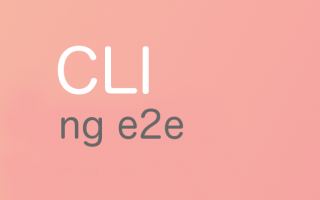Data visualization is a crucial part of any modern web application. It is essential to understand how to develop effective data visualization apps to help users better understand data and make informed decisions. In this article, we will explore how to develop data visualization apps using Angular and D3.js.
Angular is a popular JavaScript framework that is used for building modern web applications. It provides a robust set of features that make it easy to create complex, dynamic, and interactive user interfaces. D3.js is a JavaScript library that is used for data visualization. It provides a rich set of features for creating interactive and dynamic visualizations.
Before we dive into the development process, let’s have a look at some of the key benefits of using Angular and D3.js for data visualization.
Benefits of Using Angular and D3.js for Data Visualization
- Data Binding: Angular’s two-way data binding feature makes it easy to update data in real-time, making it a perfect fit for data visualization.
- Directives: Angular’s directives provide a way to extend HTML with new elements and attributes. This feature allows us to create reusable components and directives for data visualization.
- Cross-Browser Compatibility: Angular and D3.js both work seamlessly across all modern browsers, making it easy to reach a wider audience.
- Large Community: Both Angular and D3.js have large and active communities, making it easy to find support and learn from others.
Now, let’s dive into the development process.
- Install Angular and D3.js
First, we need to install Angular and D3.js. We can do this using npm, which is a package manager for Node.js. We can run the following command to install Angular and D3.js:
npm install @angular/cli d3 --save
- Create an Angular Component
Next, we need to create an Angular component that will contain our data visualization. We can create a new component using the Angular CLI by running the following command:
ng generate component visualization
This will create a new folder called visualization in the src/app directory, which contains all the files necessary for an Angular component.
- Add D3.js to the Component
We can now add D3.js to our component. We can do this by importing D3.js into our component’s TypeScript file, like so:
import * as d3 from 'd3';
This will give us access to all of the D3.js functions and methods that we need to create our data visualization.
- Create a SVG Element
We will use SVG (Scalable Vector Graphics) to create our data visualization. We can create an SVG element in our component’s HTML file, like so:
<svg></svg>
This will create an empty SVG element that we can use to draw our visualization.
- Draw the Data Visualization
Finally, we can use D3.js to draw our data visualization inside the SVG element. We can create a function that will render our data visualization, like so:
private renderChart(): void {
// create an SVG element
const svg = d3.select('svg');
// create a circle element
const circle = svg.append('circle')
.attr('cx', 50)
.attr('cy', 50)
.attr('r', 25)
.attr('fill', 'red');
}
In this example, we are creating a circle element and adding it to the SVG element. We can then call this function from the component’s constructor to render our data visualization.
And that’s it! We have now created a simple data visualization app using Angular and D3.js.
Conclusion
In this tutorial, we have learned how to develop data visualization apps with Angular and D3.js. By combining the power of Angular and D3.js, we were able to create a dynamic and interactive visualization that responds to user input.
We started by setting up our Angular project and installing the necessary dependencies. Then, we created a simple bar chart using D3.js and integrated it into our Angular component. We also explored how to use D3’s scales and axes to enhance our visualization.
Next, we looked at how to make our visualization interactive by adding event listeners and updating the data based on user input. We also discussed how to use Angular’s change detection mechanism to ensure that our visualization stays up-to-date.
Finally, we explored how to customize the look and feel of our visualization using CSS and D3’s built-in styling features. We also discussed how to deploy our app to a production server using the Angular CLI.
Overall, data visualization is an essential tool for any data-driven application. By using Angular and D3.js, we can create powerful and engaging visualizations that help users understand and interact with their data. With the skills learned in this tutorial, developers can create data visualization apps that are not only functional but also aesthetically pleasing and user-friendly.



